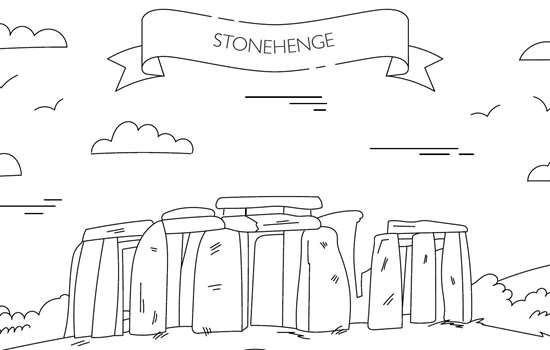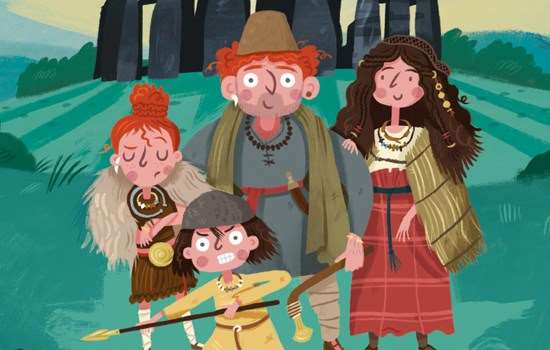Stonehenge in Wiltshire was built 4,500 years ago by people who were skilled at maths, engineering and astronomy. Can you use those skills to discover how they did it?
1. NUMBER CRUNCHING
Stonehenge was built using sarsen (a type of sandstone) and a rock called bluestone. It’s likely the sarsens were brought from the Marlborough Downs, 25 miles away. The bluestones came from the Preseli Hills, 180 miles away. Originally there were 75 sarsens and about 80 bluestones.
Can you calculate how many miles in total the stones were carried to bring them to Stonehenge?
2. ROLLING STONES
The wheel had not been invented when Stonehenge was built so people probably used sledges dragged along rollers to transport the stones, and boats to bring them from Wales. Many of the stones are missing because people long ago took them for construction nearby. Now there are only 33 sarsens left.
Can you calculate the percentage of sarsen stones that have gone missing?
3. JOINED TOGETHER
The people who built Stonehenge lived in the Neolithic period, the last part of the Stone Age. This was a time before metal, so tools were made from stone, wood, bone and antler, and ropes made from plants. They used hammer stones to work the stones and to make mortise and tenon joints to hold them together.
Why do you think they made these joints?
4. HEAVE-HO!
To raise the vertical stones, which weighed up to 30 tons each, people dug holes with sloping sides in the ground using antler picks, and then pulled the stones upright into position. They then used wooden scaffolding to raise the horizontal lintel stones into position.
What sort of tool do you think they used to move the heavy stones up, step by step?
5. A SPECIAL DESIGN
Stonehenge was built to align with the sun. If you stand in the centre at sunrise on the longest day, the sun rises over the Heel Stone, a single stone outside the monument. On the shortest day, the sun goes down between the two stones of the tallest trilithon at the head of the inner horseshoe. To calculate the positions of sunrise and sunset, people had to monitor the movements of the sun over at least a year. The two extremes of the sunrise and sunset are called solstices (meaning ‘sun standstill’).
Can you work out the directions where sunrise and sunset would be from your house today? Use a compass to help you identify whether it is in the north, east, south or west.
6. SUN WORSHIP
Prehistoric people probably gathered at Stonehenge to mark the changing seasons. Perhaps they thought the sun was a god and in the middle of winter gathered to pray for the return of the light so they could plant crops.
If winter solstice falls on the 356th day of the year in 2020, can you work out which date it falls on this year?
Well done - now check your answers!
More Stonehenge themed things to do
Discover Prehistoric England
Congratulations on completing the quiz! Now that you've put your maths skills to the test, read the full issue of our Kids Rule! Guide to Prehistory. From the end of the Ice age, travel through the Stone, Bronze and Iron ages and have fun learning all about prehistoric life. We’ve even added a few jokes to make you laugh along the way.
This is part of the Kids Rule! Magazine series following the history of England, designed to help you discover more about the past, through fun facts, illustrated stories, games, puzzles and competitions.
Read the magazine online


